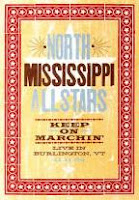
Written by Hombre Divertido
Live Free or Die Hard; either way it’s fun.
Keep your spider-men, pirates, green ogres, and silver dudes. You can let Evan build the Ark, as long as you let John McClane (Bruce Willis) crash it, cuz he is what summer is all about. No awards to be given here; this film knows its purpose and serves it well. Like visiting a friend you have not seen in far too long, and as simple as heating up a piece of pizza the next morning; this movie satisfies.
Maybe not moving as fast physically, but still able to banter with the best of them, our hero is thrust into the middle of a techno-terrorist conspiracy in which a former government employee (Timothy Olyphant) is taking control of all that is run by computers, from the back of his big rig, in order to steal all of the money in the United States. Oh, and make the point that he is smarter than everyone else of course. Luckily grizzled NYPD Senior Detective John McClane is once again surrounded by bad guys, and one hot martial artist bad girl (Maggie Q.), who couldn’t hit the ground with their guns if they dropped them.
Apparently McClane missed all the computer-training classes offered by the city, because he was too busy playing Pong and waiting for Betamax to come back, thus is reliant on his sidekick in this outing; computer hacker Matt Farrell (Justin Long) who just happened to be an unwitting pawn in the whole evil scheme, and is subsequently being hunted by our bad guys who are trying to tie up loose ends.
Long appears to be channeling a young Keanu Reeves in appearance and performance which serves him well here. Especially when we watch officer McClane escape the aforementioned big rig, as it careens down a collapsing freeway, by jumping on to the tail of an earthbound stalled jet and surfing it to safety in a stunt so ridiculous you’ll believe Sandra Bullock could jump a bus over a gap in the same freeway.
Yes, some of the stunts are way over the top, and the simplicity of escaping peril by crossing a floor covered with broken glass when you’re not wearing shoes has given way to CGI flying cars, but at least there is commitment to giving the audience what it wants. Far more commitment than in the scene where McClane attempts to convey the dark side of heroism to Farrell in a show of emotion by an action hero that will rival Rambo’s monologue at the end of First Blood for worst of all time. At least the powers that be in Stallone's outing made the effort. The audience here was treated to a scene so awkward that it appeared that someone walked in and said: “What are you guys doing? Cut this out and just blow something up!”
If you are hoping for an appearance by Bonnie Bedilia as Mclane’s ex-ex-wife, or Reginald VelJohnson as John's old pal Sgt. Al Powell, no such luck. You will get to meet Lucy McClane, played quite efficiently by Mary Elizabeth Winstead, who is not only her mother's daughter, but more importantly daddy’s little girl, as she manages to not only infuriate her dad, but the head bad guy as well. She shows sequel potential herself as she manages to rumble with and shoot a henchman along the way.
So maybe we are missing a few friends from the past, and some of the scenes and stunts may not always work, but this is popcorn faire at its best and is certainly worthy of its predecessors. Please Bruce; don’t make us wait so long to see John McClane again. He’s a relatable character that works in the right and wrong place all the time.
Recommendation: It’s been far too long since we’ve had this kind, and this much fun at the movies. Stop reading and go now.














